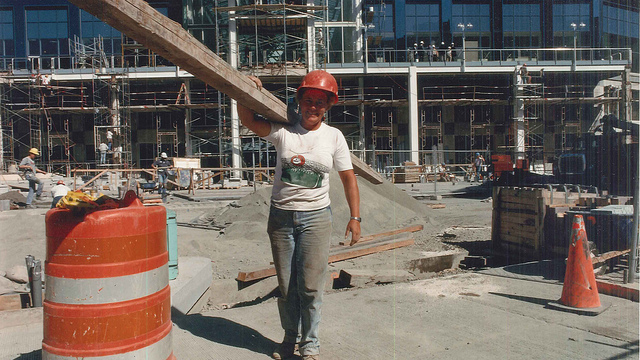Reposted from USA Today.
I needed a man’s wage. That’s how one of New York City’s first female union carpenters explained her career choice to me 10 years ago. She was a single mother who had successfully raised two boys and sent them through college. I was at the start of what continues to be my mission: expanding women’s access to high-wage jobs in the construction industry.
To appreciate the wisdom of this career path, just consider the numbers. For construction workers, the national median wage is now more than $24 per hour — with union members earning considerably more counting benefits. Compare this to secretaries and administrative assistants — the most common occupations for women — whose median pay is just over $15 per hour. Based on these figures, a U.S. construction worker stands to make 60% more than her peer who follows a traditional woman’s career path. And of course the contrast is even starker with minimum wage jobs, two-thirds of which are held by women. The typical U.S. construction worker earns well over three times the current federal minimum wage of $7.25 per hour.
Even in the course of a day or a week, these differences are huge — and over the course of a lifetime, they are transformative. A construction worker will earn approximately $1 million more over a 30-year career than her counterpart in a minimum wage job.
Such comparisons make it all the more troubling that women account for less than 3% of the nation’s construction workers, a place they have been stuck for decades. By contrast, women have made far more headway in other traditionally male fields, making up an ever-growing percentage of paramedics, farmers, police officers and military personnel.
What accounts for the ongoing absence of women in the construction industry? One key obstacle is a simple lack of commitment among lawmakers and regulators. History suggests that when equal opportunity laws targeting women construction workers are passed and enforced, women get more work — often close to 10% of all construction work hours. These best practices clearly show that if efforts were sustained over time, far more than the current 2.6% of construction workers would be women. For example, in 1999, the federal government hired an affirmative action contractor in connection with construction of the Stokes Courthouse in Cleveland. The result was that 8.40% of the work hours went to women. In 2014, the Minnesota Sports Facility Authority included an equity plan in its new stadium construction project. To date, 9% of construction work hours have gone to women, exceeding the plan’s goal of 6%.
But perhaps the greatest challenge of all is the culture of the construction industry, which has a long history of excluding and mistreating women. For the most part, the women I’ve come to know during my decade of advocacy work do their best to ignore harassment, opting simply to work hard and keep their heads down. However, when such cases do go to court, they often reveal pervasive discrimination. For instance, in 2004, a female elevator mechanic’s complaint alleged that she was assigned scut work such as mopping, received training materials rife with vile allusions to women and rape, was confronted with pornography on her work site, and supervisors that told her sexual favors would help her evaluations. The case was settled with a consent stipulation that the company would ensure equal opportunity to women, train workers and supervisors to prevent sexual harassment and improve its anti-discrimination policies and complaint procedures. In a 2012 study commissioned by the federal government, four out of the five female construction apprentices interviewed reported overt harassment and discrimination as well as isolation and exclusion — including from the journey-level workers assigned to teach apprentices their craft.
In connection with this summer’s White House Summit on Working Families, President Obama called for increasing women’s access to non-traditional occupations in order to help close the gender pay gap. In particular, he cited efforts now under way for helping contractors identify women and minority workers more easily, creation of a digital clearinghouse for women accessing non-traditional occupations, and a new focus on enforcing equal opportunity laws for non-traditional workers.
Such steps are long overdue — and only a beginning. With women now the primary or sole wage earner for 40% of U.S. households, there is a desperate need for expanded access to higher paying jobs. Not surprisingly, programs that give women access to construction industry apprenticeships leading to high-wage jobs have a high return on investment. And significantly, construction careers are unusual among higher paying jobs for not requiring more than a high school degree or equivalent, a significant consideration in a country where only 33.5% of Americans earn a four year college degree or higher.
A living wage shouldn’t be a “man’s wage” — it should be a human right. But, while that remains a utopian goal, we must work to level the playing field in ways that support women. That means urging women to consider — and helping them to obtain and thrive in — the construction jobs that have long offered men a pathway to the middle class.
Françoise Jacobsohn is co-founder and co-chair of the National Task Force on Tradeswomen’s Issues and a Ford Foundation Public Voices Fellow with the OpEd Project.


